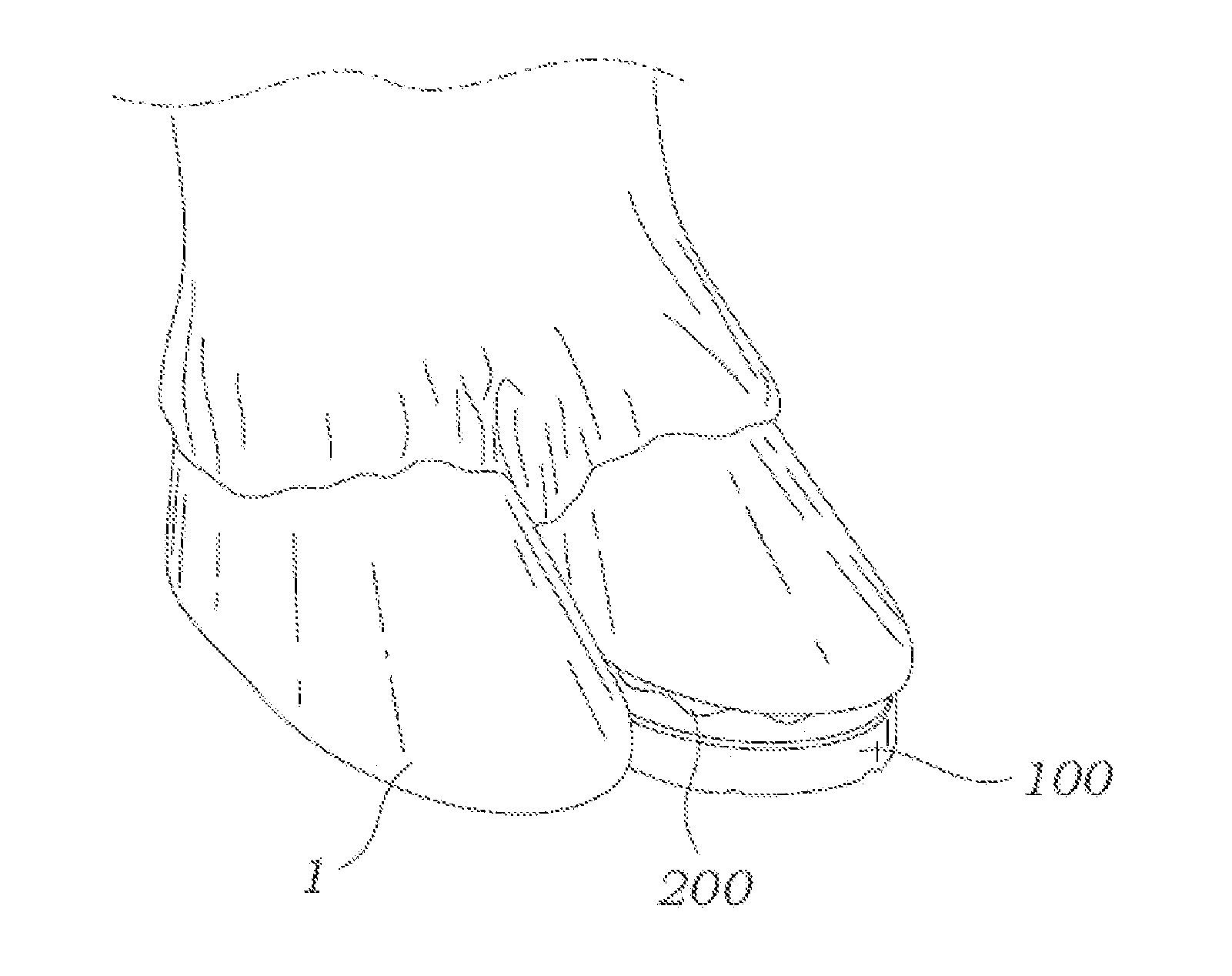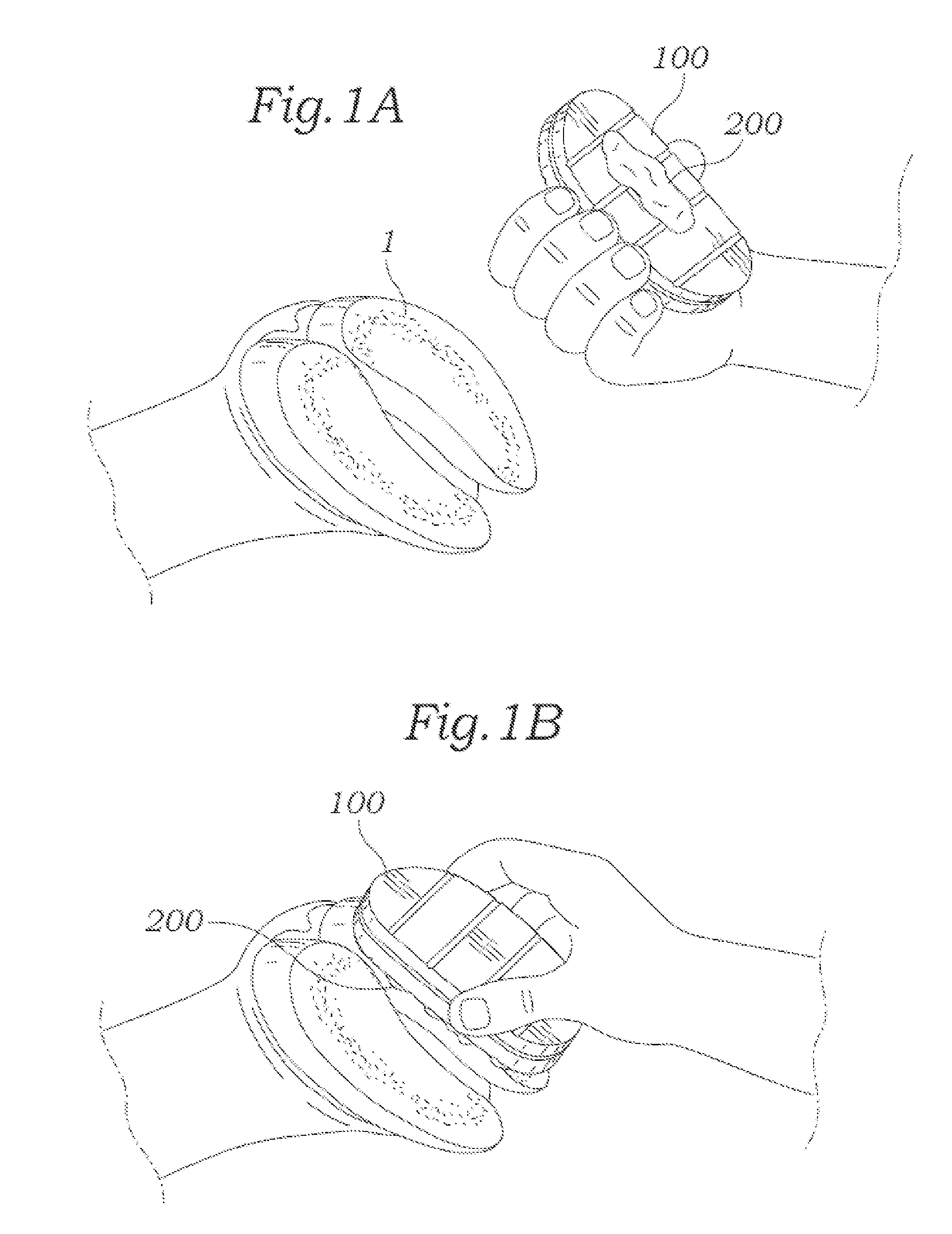Methods and compositions for treating a hoof of an ungulate animal
a technology of ungulate hooves and compositions, applied in the field of methods and compositions for treating the hooves of ungulate animals, can solve the problems of disease and economic loss, progress to create infection of bone, synovial structures, tendons and ligaments of the digits, and infected deeper tissues
- Summary
- Abstract
- Description
- Claims
- Application Information
AI Technical Summary
Benefits of technology
Problems solved by technology
Method used
Image
Examples
example
[0042]The polymer-adhesive composition is a result of a three-component reactive polyurethane system which requires parallel formation of the reactive isocyanate portions. The reactive isocyanate portions are then combined and a resulting two-component system is provided. The concept of parallel isocyanate prepol formulation is contrary to standard serial formulation practice. Although this may add complexity to the manufacturing process, it results in a polymer-adhesive composition that is soft, adhesive and has a very short cure time. The constituents of each of the three components A1, A2 and B are provided below:
Composition A1
[0043]
IngredientQuantity4,4′-dipheylmethane-diisocyanate76.5%Castor oil20.6%Isocyanatopropyltriethoxysilane1.0%Glycidoxypropyltrimethoxysilane1.9%
Composition A2
[0044]
IngredientQuantityDicyclohexylmethane-4,4-diisocyanate 20%Polyether polyol55.24%4,4′-diphenylmethane-diisocyanate (MDI)15.24%Triethoxy (3-isocyanatopropyl) silane 9.52%
[0045]
Ingre...
PUM
| Property | Measurement | Unit |
|---|---|---|
| time | aaaaa | aaaaa |
| time | aaaaa | aaaaa |
| time | aaaaa | aaaaa |
Abstract
Description
Claims
Application Information
 Login to View More
Login to View More - R&D
- Intellectual Property
- Life Sciences
- Materials
- Tech Scout
- Unparalleled Data Quality
- Higher Quality Content
- 60% Fewer Hallucinations
Browse by: Latest US Patents, China's latest patents, Technical Efficacy Thesaurus, Application Domain, Technology Topic, Popular Technical Reports.
© 2025 PatSnap. All rights reserved.Legal|Privacy policy|Modern Slavery Act Transparency Statement|Sitemap|About US| Contact US: help@patsnap.com



